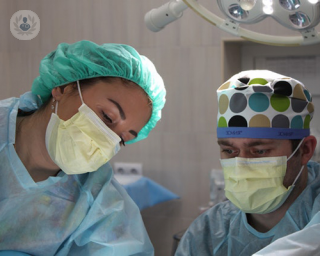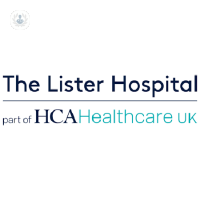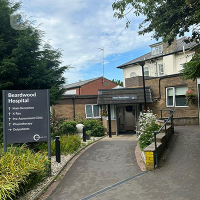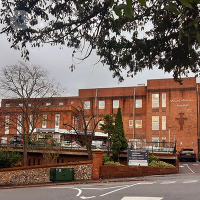Minimal access surgery (keyhole surgery)
Mr Parijat Bhattacharjee - Obstetrics & gynaecology
Created on: 02-02-2018
Updated on: 09-18-2023
Edited by: Aoife Maguire
What is minimal access surgery?
Minimal access surgery (MAS) is a surgical approach that can be used within many areas of gynaecology, including reproductive medicine, urogynaecology, gynaecological oncology and benign gynaecological surgeries. MAS does not involve open surgical techniques, which with them require longer recoveries and chances of complication. MAS techniques used keyhole surgical methods such as laparoscopy and hysteroscopies. Often MAS can be carried out as a same-day or outpatient clinic procedure.

Why would you have minimal access surgery?
The following conditions might require MAS:
Diagnostic hysteroscopy –
- To investigate abnormal uterine bleeding.
Operative hysteroscopy –
- hysteroscopic myomectomy (the removal of fibroids from the uterus)
- endometrial ablation (a procedure to curb excessive menstrual bleeding or stop it altogether by destroying the lining of the uterus)
- metroplasty (surgical reconstruction of the uterus)
- adhesiolysis (the lysing of adhesions in the uterus)
Complex operative laparoscopy can be used to treat –
- ovarian cysts
- endometriosis
- adhesions
- infertility
- pelvic pain
- fibroids
What does minimal access surgery involve?
- A tool called a hysteroscope which is a very narrow telescope with a camera on the end is inserted into the uterus through your vagina and cervix.
- Images are sent from the camera to a monitor that the doctor or nurse can examine.
- No incisions are required with this technique.
- These are not usually carried out under anaesthetic, however, local anaesthetic might be offered to numb the cervix, and general anaesthetic might be used for longer, more complex procedures using the hysteroscope.
- For operative cases, very fine surgical instruments can be passed along the hysteroscope to cut away abnormal tissue such as fibroids.
- A procedure in which a laparoscope (a small tube with a camera on the end) sends images to a monitor to allow the surgeon to diagnose or operate on a patient.
- No large incisions are required, but a few small incisions are made on your abdomen where the laparoscope is inserted.
- Sometimes gas will be inserted into the abdomen to allow the surgeon better access.
- It is commonly used to treat endometriosis, ectopic pregnancy, ovarian cysts and fibroids.
- Laparoscopies are carried out under general anaesthetic.
How to prepare for minimal access surgery
Hysteroscopies are a day-case procedure and no stay at the hospital will be required. Before the hysteroscopy you will be tested to check for suitability (you cannot have a hysteroscopy if you are pregnant), you will be advised to stop smoking if you are going to have general anaesthetic. If you are having fibroids removed, then you might be prescribed medicine to reduce their size first.
As laparoscopies are carried out under general anaesthetic, you won’t be able to drink or eat up to 12 hours prior to surgery. You may need to stop taking certain medications and to stop smoking.
Post-operative care after minimal access surgery
After a hysteroscopy, you can normally return home the same day, or at least until the anaesthesia has worn off. It is normal to feel cramps that are similar to menstrual cramps for a few days, and you might also experience some light bleeding. Most women feel they can return to work after a day or two.
Recovery from a laparoscopy varies and depends on why the laparoscopy was carried out. If the procedure was diagnostic, you can usually return to normal activities within a few days. If you had treatment during the laparoscopy, then recovery is likely to take up to 12 weeks.
















